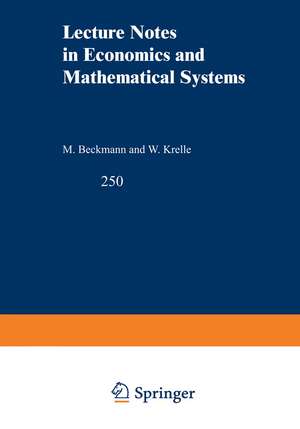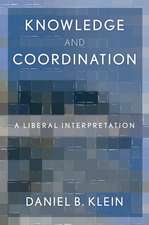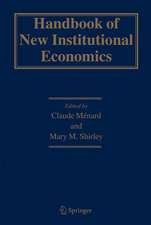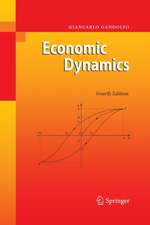Preference Modelling: Lecture Notes in Economics and Mathematical Systems, cartea 250
Autor Marc Roubens, Philippe Vinckeen Limba Engleză Paperback – sep 1985
Din seria Lecture Notes in Economics and Mathematical Systems
-
 Preț: 360.02 lei
Preț: 360.02 lei -
 Preț: 383.93 lei
Preț: 383.93 lei -
 Preț: 384.09 lei
Preț: 384.09 lei -
 Preț: 380.07 lei
Preț: 380.07 lei -
 Preț: 446.26 lei
Preț: 446.26 lei -
 Preț: 497.37 lei
Preț: 497.37 lei -
 Preț: 380.84 lei
Preț: 380.84 lei -
 Preț: 384.86 lei
Preț: 384.86 lei -
 Preț: 378.34 lei
Preț: 378.34 lei -
 Preț: 399.67 lei
Preț: 399.67 lei - 20%
 Preț: 360.93 lei
Preț: 360.93 lei - 15%
 Preț: 643.16 lei
Preț: 643.16 lei -
 Preț: 379.09 lei
Preț: 379.09 lei -
 Preț: 404.74 lei
Preț: 404.74 lei -
 Preț: 385.62 lei
Preț: 385.62 lei - 15%
 Preț: 644.49 lei
Preț: 644.49 lei -
 Preț: 379.09 lei
Preț: 379.09 lei -
 Preț: 345.50 lei
Preț: 345.50 lei -
 Preț: 425.80 lei
Preț: 425.80 lei -
 Preț: 378.34 lei
Preț: 378.34 lei - 18%
 Preț: 775.65 lei
Preț: 775.65 lei -
 Preț: 392.60 lei
Preț: 392.60 lei -
 Preț: 401.61 lei
Preț: 401.61 lei - 15%
 Preț: 646.43 lei
Preț: 646.43 lei -
 Preț: 382.18 lei
Preț: 382.18 lei -
 Preț: 378.34 lei
Preț: 378.34 lei - 15%
 Preț: 637.59 lei
Preț: 637.59 lei - 15%
 Preț: 647.27 lei
Preț: 647.27 lei -
 Preț: 377.73 lei
Preț: 377.73 lei -
 Preț: 447.84 lei
Preț: 447.84 lei - 15%
 Preț: 644.49 lei
Preț: 644.49 lei -
 Preț: 386.00 lei
Preț: 386.00 lei - 15%
 Preț: 654.43 lei
Preț: 654.43 lei -
 Preț: 415.02 lei
Preț: 415.02 lei -
 Preț: 411.54 lei
Preț: 411.54 lei -
 Preț: 398.92 lei
Preț: 398.92 lei -
 Preț: 398.92 lei
Preț: 398.92 lei -
 Preț: 392.75 lei
Preț: 392.75 lei - 15%
 Preț: 635.47 lei
Preț: 635.47 lei - 20%
 Preț: 653.56 lei
Preț: 653.56 lei -
 Preț: 379.86 lei
Preț: 379.86 lei -
 Preț: 495.46 lei
Preț: 495.46 lei -
 Preț: 447.99 lei
Preț: 447.99 lei -
 Preț: 378.71 lei
Preț: 378.71 lei - 15%
 Preț: 637.13 lei
Preț: 637.13 lei -
 Preț: 385.84 lei
Preț: 385.84 lei -
 Preț: 378.54 lei
Preț: 378.54 lei - 15%
 Preț: 666.55 lei
Preț: 666.55 lei -
 Preț: 380.07 lei
Preț: 380.07 lei
Preț: 378.34 lei
Nou
Puncte Express: 568
Preț estimativ în valută:
72.40€ • 75.93$ • 60.27£
72.40€ • 75.93$ • 60.27£
Carte tipărită la comandă
Livrare economică 01-15 aprilie
Preluare comenzi: 021 569.72.76
Specificații
ISBN-13: 9783540156857
ISBN-10: 3540156852
Pagini: 108
Ilustrații: VIII, 98 p.
Dimensiuni: 170 x 244 x 6 mm
Greutate: 0.19 kg
Ediția:Softcover reprint of the original 1st ed. 1985
Editura: Springer Berlin, Heidelberg
Colecția Springer
Seria Lecture Notes in Economics and Mathematical Systems
Locul publicării:Berlin, Heidelberg, Germany
ISBN-10: 3540156852
Pagini: 108
Ilustrații: VIII, 98 p.
Dimensiuni: 170 x 244 x 6 mm
Greutate: 0.19 kg
Ediția:Softcover reprint of the original 1st ed. 1985
Editura: Springer Berlin, Heidelberg
Colecția Springer
Seria Lecture Notes in Economics and Mathematical Systems
Locul publicării:Berlin, Heidelberg, Germany
Public țintă
ResearchCuprins
1: Binary Relations: Definitions, Representations, Basic Properties.- 1.1. Binary relations.- 1.2. Graph representation of binary relations.- 1.3. Coding the binary relations.- 1.4. Matrix representation of binary relations.- 1.5. Basic properties of binary relations.- 1.6. Particular binary relations.- 1.7. Graph interpretation of the properties.- 1.8. Algebraic interpretation of the properties.- 1.9. References.- 2: The Concept of Preference Structure.- 2.1. Preference, indifference, incomparability.- 2.2. Preference structure.- 2.3. Important agreement.- 2.4. Characteristic relation of a preference structure.- 2.5. Graph representation of a preference structure.- 2.6. Coding the preference structure.- 2.7. Example.- 2.8. References.- 3: Usual Preference Structures.- 3.1. Tournament structure.- 3.2. Total order structure.- 3.3. Weak order structure.- 3.4. Total interval order structure.- 3.5. Total semiorder structure.- 3.6. Partial order structure.- 3.7. Quasi order structure.- 3.8. References.- 4: Two New Preference Structures.- 4.1. Partial interval order structure.- 4.2. Partial semiorder structure.- 4.3. References.- 5: Complete Valued Preference Structures.- 5.1. Definition.- 5.2. Important remark.- 5.3. Particular case.- 5.4. Graph representation.- 5.5. Matridal representation.- 5.6. Particular complete valued preference structures.- 5.7. Binary relations and various properties related to a complete valued preference structure.- 5.8. Characterizations of the families defined in section 5.6...- 5.9. Functional representation of a valued preference structure.- 5.10. Roberts homogeneous families of semiorders.- 5.11. Families of weak orders.- 5.12. Summary.- 5.13. Examples.- 5.14. References.- 6: Complete Two-Valued Preference Structures.- 6.1. Introduction.- 6.2.Two-valued preference structures with constant thresholds.- 6.3. Example.- 6.4. References.










